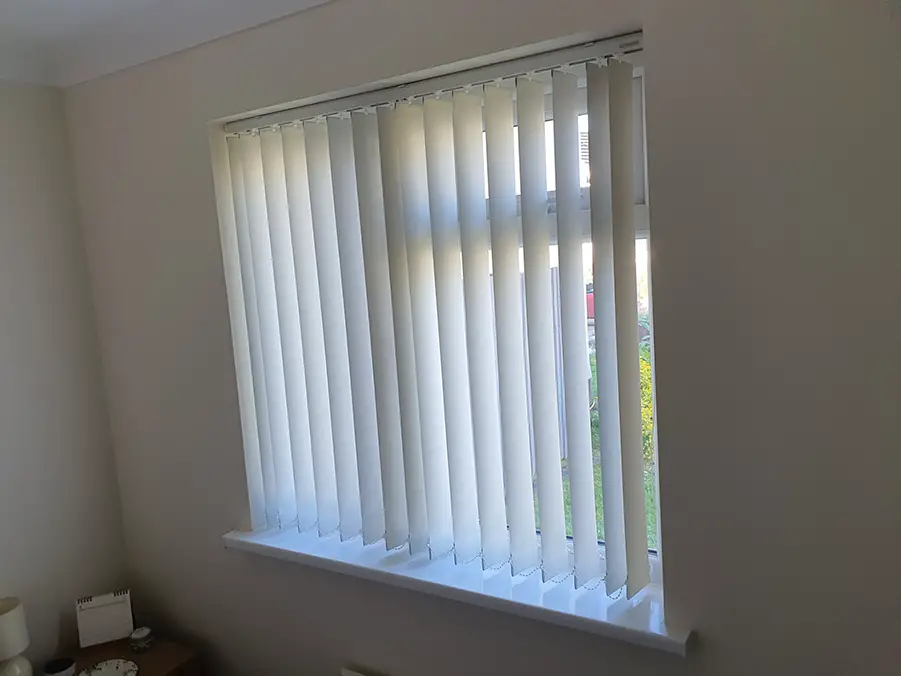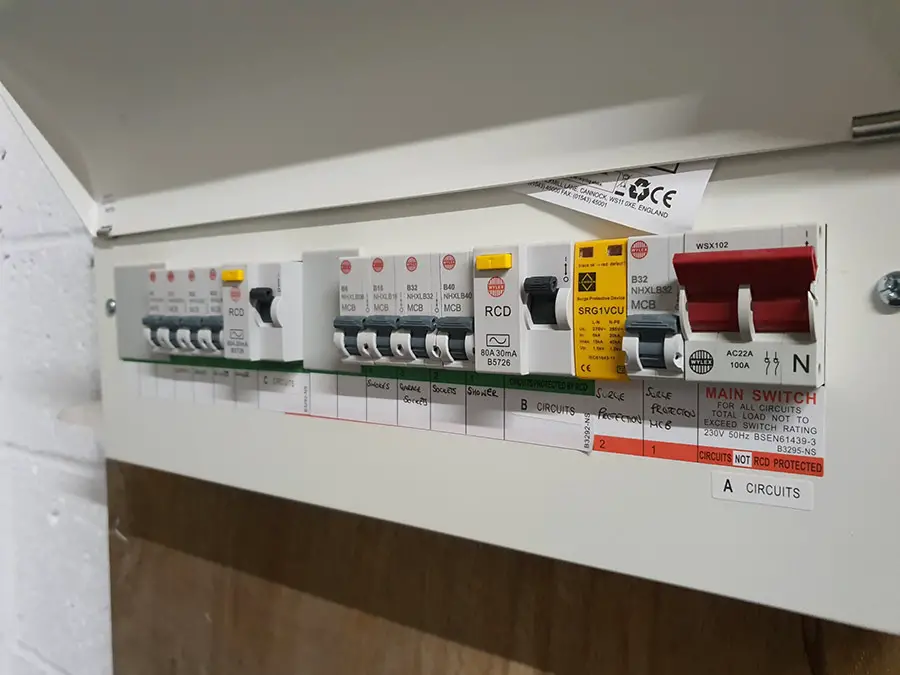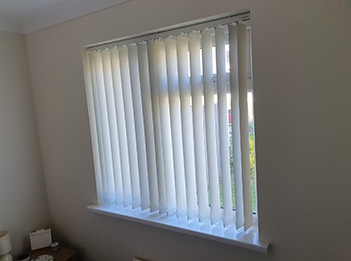Affiliate Disclosure: As an Amazon Associate I earn from qualifying purchases.
Smart blinds can be a lovely addition to any smart home. Knowing that you don’t have to get out of the bed to open the blinds and let in sunlight in the morning is bliss, but how are they actually powered and which power source would be best for your home?
Smart blinds can be powered in several ways, including hardwiring, battery operated, solar powered or using a DC power adaptor. Most smart blinds will either battery powered or use 240V mains power.
Let’s take a closer look at some of the pros and cons of each method of powering your smart blinds to help you decide which may be best for you.
What Are Smart Blinds?
You may be wondering what smart blinds are exactly, especially given they aren’t as commonly found in some smart homes whereas smart lights and smart plugs are.
Smart blinds look like a regular blind but have a built-in motor that allows you to control when the blind is lowered or raised, without ever having to touch it. They are also commonly referred to as automated blinds.
Some brands will also have the ability to adjust themselves automatically based on the amount of light that is coming in from the outside. This is thanks to them having a built-in light sensor that can be set to detect different times of the day.
Blinds wouldn’t be smart if you had to physically adjust them yourself which is why they will all come with at least a remote control, but most will come with a smartphone app also.
Many will now integrate with other smart home systems and virtual assistants like Alexa and Google Home so they can also be controlled by your voice.
Combine smart blinds with some of your other smart home gear and you can setup some really cool automations.
One example being that through a single voice command, you can have your smart blinds open, your speakers play some music to help wake you up, and a smart plug turn on the coffee machine so it is brewed and ready for you to drink when you get out of bed.

Battery Powered
Battery powered smart blinds are probably the most commonly found given they make the simplest option.
They work by having a tube along the top of the blind that contains a motor. The battery sits just above the tube and connects to the motor to provide it with the power it needs.
As well as being very simple to setup, blinds that are battery powered are often considered the best looking as the battery is very discrete and you don’t have trailing wires connected to a nearby power outlet.
Given that everything needed for the smart blind to work is contained within a single unit, these types are the easiest to install too. Any benefit is that they won’t take up a valuable power outlet in the room.
Speaking of power outlets, there may not be one conveniently placed in relation to your windows, and you may not even be allowed to have outlets in certain rooms like the bathroom.
Battery powered smart blinds are the perfect solution in this case.
The only real downside with smart blinds that are battery-powered is with the lifespan of the batteries themselves. Most blinds will use standard AA batteries and so you’ll find useful having to replace them pretty often.
Lithium batteries are known to last longer, but there will still come a time when they need to be replaced, nonetheless.
Hardwired
Having to frequently swap out batteries can become a chore, so you may want to consider hardwiring your smart blinds to provide power to the motor instead.
Smart blinds won’t use a huge amount of electricity, so energy costs shouldn’t be too much of a concern for you. In fact, you could well find yourself spending more money on batteries over the long term compared with using your mains electricity supply to power the blinds.
Different voltages are used across homes, so you will be pleased to hear that smart blinds use different types of motor to accommodate more people. There is no need for you to worry that the smart blinds you are looking at won’t be “compatible” with your home’s electrics; chances are you will be able to find some that match perfectly.
There are a couple of downsides to using the hardwired solution.
Firstly, you may need to be able to reach a power outlet. If you have one close to the window, great, but if not, it can be a pain to try and provide them with the power they need.
Installation also isn’t as easy, and you may even need to bring in a professional electrician to help you.
Some of the more basic blinds may be perfectly fine for you to install yourself; just plug them in to an outlet and you’re away.
If you’d rather have them powered from a power distribution panel, you will certainly need to get a professional in. This method centralizes power control and can distribute the power needed to several blinds positioned throughout your home.
So, is hardwiring the preferred solution for you?
I would recommend the bit of extra investment into getting an electrician in to power your blinds for you if you are looking for a more permanent setup or would like to have multiple blinds setup. Having them all powered through the distribution panel makes it so much more convenient and won’t take up valuable power outlets throughout your home.

Solar Powered
You wouldn’t usually expect something that is placed inside to be solar powered, but smart blinds are an exception given that they are positioned right next to windows where a flood of sunlight can reach them.
If you want your smart blinds to use this form of powered, you will need a solar panel system that you will need to buy in addition to the blinds themselves.
It will need to be positioned in such a way that it is behind the blind and facing outwards in order to receive the sunlight. The unit then connects to the blind’s motor in exactly the same way as the battery-operated and hardwired methods.
Something to keep in mind if you are considering this option is that not all windows in the home will receive the same amount of light, and you don’t want anything obstructing the windows like trees or awnings.
Given this, I would suggest having your solar-powered blinds in windows that face the west or the south as these will generally receive more light throughout the day.
If you are fortunate enough to receive a good amount of natural sunlight, solar-powered smart blinds are worth considering, but you don’t want to leave yourself in a position where they aren’t being powered sufficiently and end up being unusable.
DC Power Adaptor
Like the hardwired solutions, smart blinds powered by a DC power adaptor are pretty energy efficient whilst being much more convenient to install.
All that is required is an available power outlet; there is no complicated install and no additional wiring to worry about.
Hang up your blind, plug them into a power outlet and you’re away.
Despite being very easy to set up and start using straight away, I would personally avoid this method of providing power to your blinds as I can’t stand seeing unsightly wires around, especially if they are trailing down the wall.
You also have the hassle of having to find a power outlet that is both positioned nearby and available.
Which Form of Power Is Best?
My opinion is that smart blinds should be powered either by batteries or hardwired into the mains electricity supply.
Battery-operated blinds are incredibly convenient and ridiculously easy to install. You also have much more flexibility around where in the home they can be placed, and they don’t require any extra investment like a professional electrician.
Just be prepared to frequently replace the batteries, which can actually work out being more expensive in the long run.
If you are looking for a more permanent setup or even want several smart blinds set up throughout your home, I would recommend having them hardwired.
Yes, this will cost more as you will need to get an electrician in to install the wiring for you, but having all your blinds powered through the single power distribution panel and not have to find available power outlets for each makes it a worthwhile investment if you ask me.
If you’re in it for the long haul in terms of having several smart blinds installed and you’re not planning on moving home anytime soon, you may this method of powering your blinds costs less than batteries, especially over a number of years.
